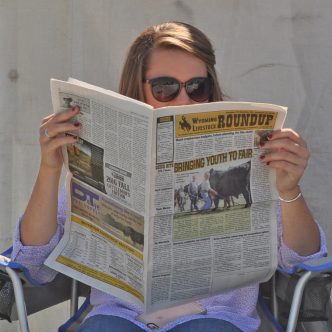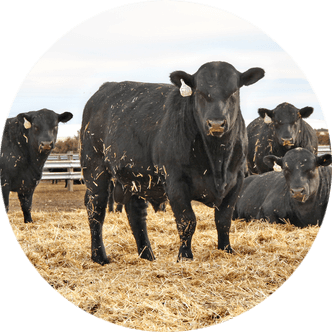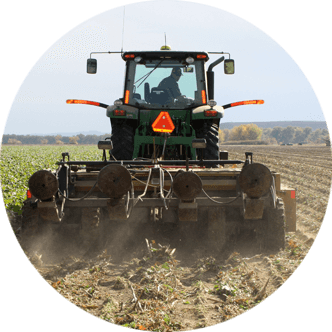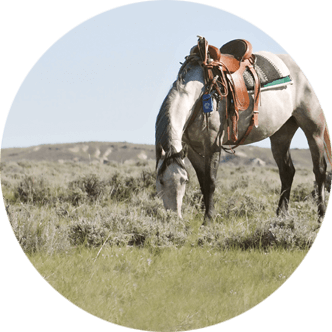2025 Forecast: WGFD hunt forecast continues outlook for big game
As the changing of the seasons brings cooler mornings, golden hillsides and the sound of elk bugling at dusk, hunters from near and far will don their cold gear and camo to set out for the hills.
From big game to upland birds, Wyoming is home to a host of trophy wildlife, and just in time for hunters to converge on the Cowboy State in pursuit of their next kill, the Wyoming Game and Fish Department (WGFD) released its 2025 hunt forecast, providing a comprehensive breakdown of big and small game outlooks across the state’s eight regions.
Pronghorn
In addition to superior trophy elk and mule deer, Wyoming boasts the largest population of pronghorn in North America, with nearly 320,000 animals roaming Wyoming’s western plains.
Unfortunately, years of harsh winters, poor fawn survival and disease have taken a toll on Wyoming pronghorn, although some herds across the state are starting to make a comeback.
While many herds in the Casper region remain below objective, particularly those roaming from Douglas, Lusk and Sundance, WGFD reports numbers are improving due to mild winters and excellent fawn production in 2023-24.
This has allowed for a slight increase in the number of licenses issued, although hunting seasons in the area will remain conservative.
“Despite numbers remaining below desired levels in much of the region, hunters should experience average- to high-harvest success as buck ratios remain strong and license issuance is structured in an attempt to ensure high success for hunters,” WGFD states.
The Lander region’s pronghorn are also showing signs of recovery after heavy losses in the severe winter of 2022-23.
WGFD says hunters should expect to see fewer, lower-quality bucks compared to years prior, and as a result, license numbers remain reduced. However, with fewer hunters in the field, those who drew tags should have good chances at success, though more patience may be required, WGFD says.
Pronghorn status in the Laramie region is a mixed bag.
Western herds in the area are still rebounding from drought and the winter of 2022-23, while central populations are doing well, resulting in license increases. Grassland herds east of the Laramie Range have declined steadily over the past seven years, with poor fawn survival stunting recovery.
WGFD notes overall hunting opportunities in the Laramie region in 2025 will be similar to past years, and hunters can expect decent buck numbers but fewer older animals.
The Cody region’s pronghorn herds are in good shape, with populations stable to increasing. WGFD reports fawn production was up in 2024 compared to the year before, and early signs this year point to another strong crop.
“For those fortunate enough to draw pronghorn licenses within the region, overall hunting should be better than last year,” reads the WGFD forecast.
Likewise, the Sheridan region’s pronghorn numbers are below objective, but seem to be improving. Quotas are largely unchanged with slight increases in some areas.
WGFD reminds hunters to be mindful access is limited due to private land, and crowding is common on public parcels early in the season.
According to the report, the Green River region is home to six herds, and numbers across the region are still down.
WGFD notes the southern Sublette, Uinta-Cedar Mountain and Carter Lease herds are stable and should provide solid hunting opportunities, while the Baggs and Bitter Creek herds are still struggling and the South Rock Springs herd shows higher numbers in the north than the south.
While many herds across the state have been on the mend, those in northwest Wyoming haven’t fared as well.
After severe winter losses in 2022-23 and an outbreak of Mycoplasma bovis, nearly 2,000 licenses were cut in the Pinedale region, including all doe and fawn tags and nearly 80 percent of buck tags.
“License allocation continued to be restrictive in 2024 and will again be conservative this year,” WGFD explains. “The good news is August trend counts in 2024 resulted in a relatively high 67 fawns per 100 does and the total counts increased markedly from 2023, so the herd is bouncing back.”
The small migratory segment of the Sublette herd that makes its way through the Jackson region were part of the northwest Wyoming population suffering brutal losses. Because of this, Hunt Area 85 will remain closed for the third year in a row while regional managers continue to assess recovery.
Bighorn sheep
When it comes to Bighorn sheep, WGFD notes the Pinedale region’s Darby Mountain herd remains stable, with 79 sheep – including 16 rams – counted during March 2025 surveys. One any-ram license was issued for this herd in Hunt Area 24.
The Whiskey Mountain herd continues to struggle with chronic pneumonia and poor lamb recruitment, although a non-migratory group in Hunt Area Eight appears stable with 102 animals observed. Two resident any-ram licenses were issued here this year.
The Lander region’s Whiskey Mountain herd showed a slight improvement in lamb production, though levels remain low, as they have for decades. WGFD says hunters can expect fewer rams overall, but harvest success should be fairly high.
The Ferris-Seminoe herd has reached its population objective, prompting increased license allocations including 23 additional ewe/lamb tags and eight new Type Two Licenses for younger rams.
In total, 43 ewe/lamb licenses and nine any-ram licenses were issued in the Lander region this year, according to WGFD.
For the Laramie region, WGFD says, “Hunting should be excellent. Hunter success was 100 percent in Hunt Areas 18 and 21 and 90 percent in Hunt Area 19.”
The Jackson and Targhee herds should both offer strong hunting opportunities in the Jackson region as well, according to WGFD’s report.
The forecast reads, “Survey data in Hunt Area Seven indicates good availability of rams with three-quarters-curl or longer horns, with an average success rate in recent years of almost 65 percent. Sheep numbers in Hunt Area Seven are within management objectives and need to be maintained at those levels.”
“Ewe sheep hunters willing to spend the time and effort should have a high opportunity for success,” WGFD adds. “Type Six ewe hunters should expect most ewes to be found at high elevations of typically 9,000 feet or more during the early rifle seasons. Type Six ewe hunters will not have a special archery opportunity and may hunt within the Gros Ventre River and Flat Creek drainages east of U.S. Highway 89, 191 and 26. In Hunt Area Six, success rates vary substantially between years because of the low license quota.”
Additionally, the Absaroka herd of the Cody region remains within objective, while the Devil’s Canyon herd has dropped below objective after a recent pneumonia die off, which cut numbers by an estimated 40 percent. However, WGFD says lamb recruitment has been promising.
License allocations in the area were adjusted to balance harvest and management goals and, overall, hunters can expect good opportunities this fall.
Mountain goats
Mountain goat numbers in the Palisades herd of the Jackson region have been in decline, as reflected in the 2022 and 2024 mid-summer trend counts. In response, licenses in Hunt Area Two were reduced for the third consecutive year.
Despite fewer tags, WGFD says hunters can still expect opportunities for trophy-class billies, typically five years or older.
The department also reports the Beartooth herd of the Cody Region remains within population objectives.
The 2025 season was structured to stabilize or slightly increase goats in Hunt Area Three, while maintaining harvest in Hunt Area One. Licenses in Hunt Area Three were trimmed slightly to balance herd management goals and meet the 90-to-10 resident-to-nonresident split, while Hunt Area One allocations remained the same.
“Those fortunate enough to have drawn a goat license should have a good goat hunt this fall,” WGFD states.
Check out the Sept. 20 edition of the Wyoming Livestock Roundup for WGFD’s 2025 hunting outlook on elk, mule deer, white-tailed deer, moose and bison. Keep an eye out for the 2025 hunting outlook on small, upland game and game birds in next week’s edition.
Hannah Bugas is the managing editor of the Wyoming Livestock Roundup. Send comments on this article to roundup@wylr.net.





